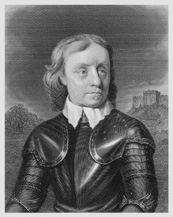The Good, the Bad and the Unready (47 page)
Read The Good, the Bad and the Unready Online
Authors: Robert Easton

 Christian the
Christian the
Nero of the North
see
Christian the
TYRANT
 Ptolemy the
Ptolemy the
New Lover of His Father
see
PTOLEMAIS KINGS
 Napoleon the
Napoleon the
Nightmare of Europe
see
Napoleon the
LITTLE CORPORAL
 Jane the
Jane the
Nine Days’ Queen
Lady Jane Grey, queen of England, 1537–54
Just a few weeks before his own death Edward the
JOSIAH OF ENGLAND
(see
ENGLISH EPITHETS
) amended the will of his father
BLUFF KING HAL
, dismissing the claim of
BLOODY MARY
as the rightful heir to the English throne and nominating the fifteen-year-old Jane instead. The codicil proved to be the death warrant for the well-educated, well-mannered Protestant girl from Leicestershire.
On 10 July 1553 she was proclaimed queen. Genoese merchant Baptista Spinola happened to be in London on that day and saw England’s new monarch pass by. ‘She is very short and thin,’ he wrote, ‘but prettily shaped and graceful… She is now called Queen but is not popular, for the hearts of the people are with Mary, the Spanish Queen’s daughter… This lady is very heretical, and has never heard Mass.’ Nine days later and ‘Jane the Quene’ was deposed and became ‘Jana non Regina’. The following February she was executed for high treason.
 Elizabeth the
Elizabeth the
Northern Harlot
see
Elizabeth the
INFAMOUS
 Nose Almighty
Nose Almighty
Oliver Cromwell, Lord Protector of the Commonwealth, 1599–1658
There was something about Oliver Cromwell’s eyes. Grey-green, heavy-lidded, melancholy yet piercing, they were nearly always mentioned when people described him. But more universally discussed than his eyes – more indeed than the warts near his left eye, which he famously demanded to be included in a portrait – was another unmistakable facial feature. Oliver Cromwell, the driving force behind the revolutionary opposition to Charles the
LAST MAN
and Charles the
MERRY MONARCH
in the English Civil Wars, had a very big, and a very red, nose. Its colour fascinated the nation. A poem circulating during Cromwell’s time termed it ‘the Lancaster rose’, while a contemporary pamphlet spoke of it somewhat less coyly as ‘the glow-worm glistening in his beak’. Its colour, and indeed his entire complexion, which one later commentator compared to that of a piece of wood or an unbleached almond, led many to the misguided assumption that he overindulged in drink.

Nose Almighty
Popular nicknames focused almost exclusively on his proboscis: ‘Nose Almighty’, ‘Copper Nose’, ‘Ruby Nose’ and simply ‘Nosey’ became common parlance. Some royalists also nicknamed their arch-opponent ‘Crum-Hell’ since, in his lifetime, Cromwell’s name was pronounced ‘Crumwell’, while Rupert the
MAD CAVALIER
dubbed his adversary ‘Old Ironsides’ because his ranks at the battle of Marston Moor in 1644 were so impenetrable.
Norse Sagas
The Norse sagas are veritable treasuries of nicknames. While many characters possess patronymic second names such as ‘Ingiborg Finn’s-Daughter’ and ‘Heinrik Haraldsson’, many others have an epithet in place of, or in addition to, their filial name. Individual entries for many of the main characters, such as Sven
FORKBEARD
and Erik the RED, can be found elsewhere in this work. The lists below contain some of the supporting cast.
The anonymous
Orkneyinga Saga
was written around 1200 and tells of the conquest of the Scottish Northern Isles by the kings of Norway in the ninth century and the subsequent history of Orkney. Within its pages we find:
Thorarin Bag-Nose
Einar Belly-Shaker
Svein Breast-Rope
Einar Buttered-Bread
Sigurd the Fake Deacon
Havard the Fecund
Thorkel Flayer
Thorkel the Fosterer
Angus the Generous
Oddi the Little
Arni Pin-Leg
Hugh the Stout
Olaf Tit-Bit
Egil’s Saga
, thought to have been written by Snorri Sturluson around 1230, describes the Viking world from the middle of the ninth century to the end of the tenth. As well as Egil, the ruthless Viking hero, we learn about:
Sigtrygg the Fast Sailor
Harald Grey-Cloak
Thora Lace-Cuff
Thorvald the Overbearing
Ljot the Pale
Einar the Scale Clatterer
Eyvind Shabby
Atli the Short
The romantic medieval Icelandic
Laxdaela Saga
, composed by an unknown author around 1245, mentions:
An the Black (who, for reasons unspecified, is nicknamed ‘Brushwood Belly’)
Alf of the Dales
Thorbjorn the Feeble
Audun Fetter-Hound
Ketil Flat-Nose
Thorhalla the Gossip
Asgeir the Hot-Head
Geirmund the Noisy
Olaf the Peacock
Gunnlaug Serpent-Tongue
Thord the Short
Bork the Stout
Hallfred the Troublesome Poet
Gizur the White
Describing the Norse discovery of America, the two
Vinland Sagas
also recount how Erik the Red started a colony on Greenland. They introduce the reader to Erik’s son (Leif the Lucky), as well as Hrafn the Dueller – a warrior killed by Erik – and a man by the name of Thord Horse-Head.
Finally,
Njal’s Saga
is an Icelandic family saga written in the late thirteenth century. Along with the following:
Orm Box-Back
Thorstein Cod-Biter
Eystein the Noisy
Ref the Poet
Ragnar Shaggy-Breeches
Askel the Silent
Hedin the Sorcerer
Sigurd Swine-Head
Ulf the Unwashed
Bessi the Wise
Haf the Wise
It also features a man called Iron-Grim wearing nothing but a goatskin.
His political supporters, meanwhile, had other names for their hero. Many knew him as ‘King Oliver’ since he was king in all but name, turning down Parliament’s offer of the crown in 1657. Later in life he was affectionately referred to as ‘Old Noll’, Noll being a familiar form of Oliver.
 Nosey
Nosey
see
NOSE ALMIGHTY